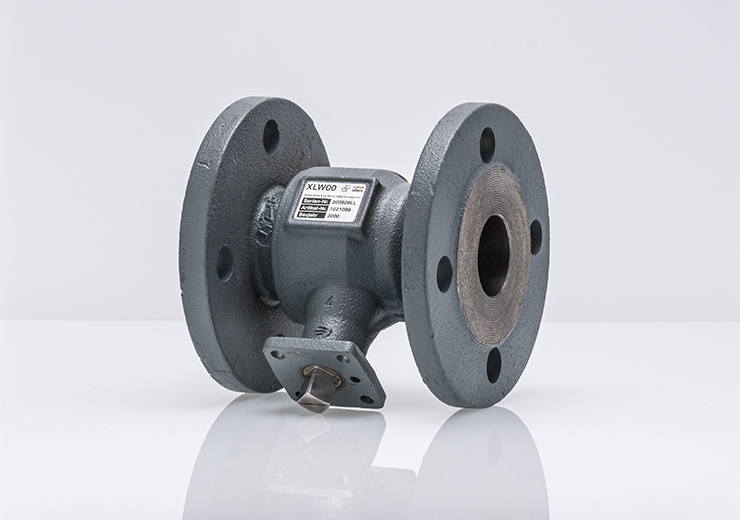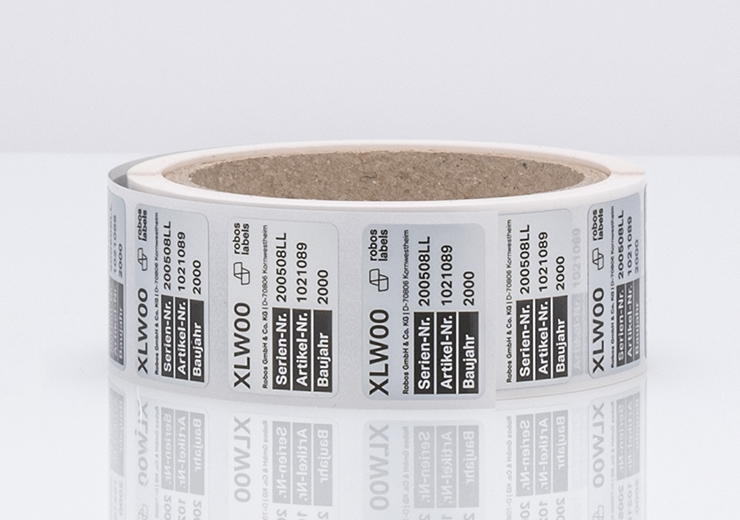Labels for oily, dirty, and dusty substrates
These labels satisfy the highest requirements and adhere securely on demanding surfaces. These include also oily, dirty, rough and formable substrates as well as porous surfaces. Here the basis of the chosen adhesives is essential, which basically consists from acrylate or rubber. Special adhesives unite acrylate and rubber to a hybrid adhesive to benefit from the advantages of both components and offer best possible reliability of a consistent and long term labeling.
The main features of labels for oily, dirty, and dusty surfaces
- Very high adhesive power of labels also on slightly oily/dirty surfaces
- Good adhesion on substrates with low surface tension
- The labels can be adhered immediately after the manufacturing of the containers or on the bottling line
- No wrinkles or blistering in the case of extension and contraction of the container
- High resistance in outdoor applications and in contact with chemicals and solvents
- Resistance against recurring cleaning processes
- High abrasion resistance with suitable thermal transfer ribbons for the thermal transfer printing
- Suitable for standard-compliant labeling like e.g. BS5609 section II and III
- Optimization of the processes by automation of material- and product flow by automated dispensing
Functions and advantages – precisely tailored to your requirements for the labeling of difficult surfaces
The lubricants and oils will be bottled at higher temperatures. Thus the canister expands and contracts again. The label must be very robust and adhere strong to withstand this process, especially when the surfaces are additionally oily, dusty or soiled and have a structured, rough surface.
Our high performance labels will be adjusted individually to the customer’s requirements. This happens by using suitable special materials, individual die-cutting forms and premium adhesives by leading manufacturers like e.g. Avery, 3M, Flexcon, and Tesa.
The labels can be inscribed directly as required in variable amounts with current data at the site, by that the storage and the management of numerous labels may be dropped or reduced.
Our upscale and accurate processing with most modern die-cutting technologies guarantees the highest precision and reliability for the label application. Thus even labels with adhesives which are difficult to process can be processed mechanically very well, which increases the user efficiency in the long term.
Frequently Asked Questions
Industrial applications of labels for dusty and oily surfaces
The typical labeling products in the area of these labels are type plates, warning labels, or manuals. The labels serve the product information, the safety of processing and storage as well as handling and disposal. The labels can be applied for example on products, parts, machines and plants, bins, kegs or containers in the following branches:
Branches:
- Medical technology (technical gases, compressors)
- Chemical industry (canisters, gas bottles etc.)
- Transport and logistics (open sea labeling in accordance with standard BS 5069, seawater resistant labels)
- Car manufacturing (warnings on tankers, labels on tank caps and in the engine compartment)
- Vehicle construction (warnings on the containers with brake liquid and coolant etc.)
- Metal- and steel industry (raw and intermediate goods etc.)
Individual features of labels for dusty, dirty or oily substrates
Extreme environments, like for example in the engine compartment or on transmission parts made of cast iron, impose highest demands on upper materials, imprints and especially the applied adhesives. To label oily, dusty or rough and structured surfaces safely, mostly rubber-based adhesive are required, whereas also hybrid adhesives for especially difficult applications are possible. These special adhesives come into action for example in the area of treated surfaces like e.g. alloys or separating agents and lubricants.
The rubber is marked by its especially viscous structure and thus is well suited for the connection with soiled and/or structured surfaces. Here natural as well as synthetic rubber come into action, because both can permeate very well in rough indentations. Additionally, the adhesive formula and especially the application weight can be adjusted to reach long-termed balance between adhesion (the ability of two parts to stick to each other with boundary layers) and cohesion (internal cohesion of the adhesive). Always focusing on the goal to ensure the labeling of a product for the long term.
Moreover, our materials and raw materials are listed in IMDS (International Material Data System), an international and browser-based data base of the automotive industry, where the information about the composition of our materials and the banned substances list can be retrieved.
Technical key data of our labels for difficult substrates
- Temperature resistance from +150° C (302° F) C up to -40° C (-40° F)
- UV and weather resistant foils up to max. 10 years
- Very thin (min. 6µ) as well as very thick (175µ) combinations of foils possible
- High-performance materials made of polyvinylchloride (PVC) and polyester (PET)
- Permanent adhesives with a very good adhesive power for high- and low-energy substrates
- Diverse carrier materials like compressed kraft paper in different thicknesses, transparent plastic liner, kraft paper siliconized on both sides, and environmentally stable kraft paper available
- Subsequently inscribable with thermal transfer printing, laser engraving, and ink jet method
- Foil features from soft and smooth and flexible to stable and tear-proof
Certifications of our labels for oily, dusty, and dirty substrates
As a manufacturer robos-labels has a wide range of already approved and certified labeling solutions. When additional customized licenses are required, we can take on the approval- and certification process if desired.
We also cover the first article inspections (PPF, production process and product release) in accordance with the specifications of German Association of the Automotive Industry (VDA) as well as the American counterpart, a PPAP inspection (Production Part Approval Process) of the AIAG (Automotive Industry Action Group).
We already meet the following standards and regulations with our raw materials:
- FORD WSS-M99P41-A72
- MS-13445 (FCA – Fiat Chrysler Automobiles)
- TL 52038 (Volkswagen-Norm)
- GMW14573 (General Motors)
- TM-0030T-Y (Tesla)
- GS 97058 (BMW)
- MS 373-12 (Hyundai)
- DBL 8230 (Mercedes-Benz)
- TSM7508G (Toyota)
- REACH, RoHS and IMDS conformity
- UL969A:2020 Standard for Marking and Labeling Systems – Flag Labels, Flag Tags, Wrap-Around-Labels and Related Products
- UL817 Safety cord sets and power supply cords
- UL2238 Cable assemblies and fittings for industrial control and signal distribution
- UL94 Flammability of plastic materials for parts in devices and appliances (UL VTM-0 strictest classification)
- FMVSS 302 Evaluation of the flammability of interior materials (flammability/burn rate)
- ADR 2021 Ordinance on the transport of dangerous goods by road, rail and inland waterways (GGVSEB)
- CLP Regulation (Classification, Labelling and Packaging, in accordance with EC No. 1272/2008)
- BS 5609 Label resistance to saline sea water
- DIN EN ISO 11683:1997-11 Packaging – Tactile warnings of danger – Requirements
- FDA 175.105 INDIRECT FOOD ADDITIVES: ADHESIVES AND COMPONENTS OF COATINGS


